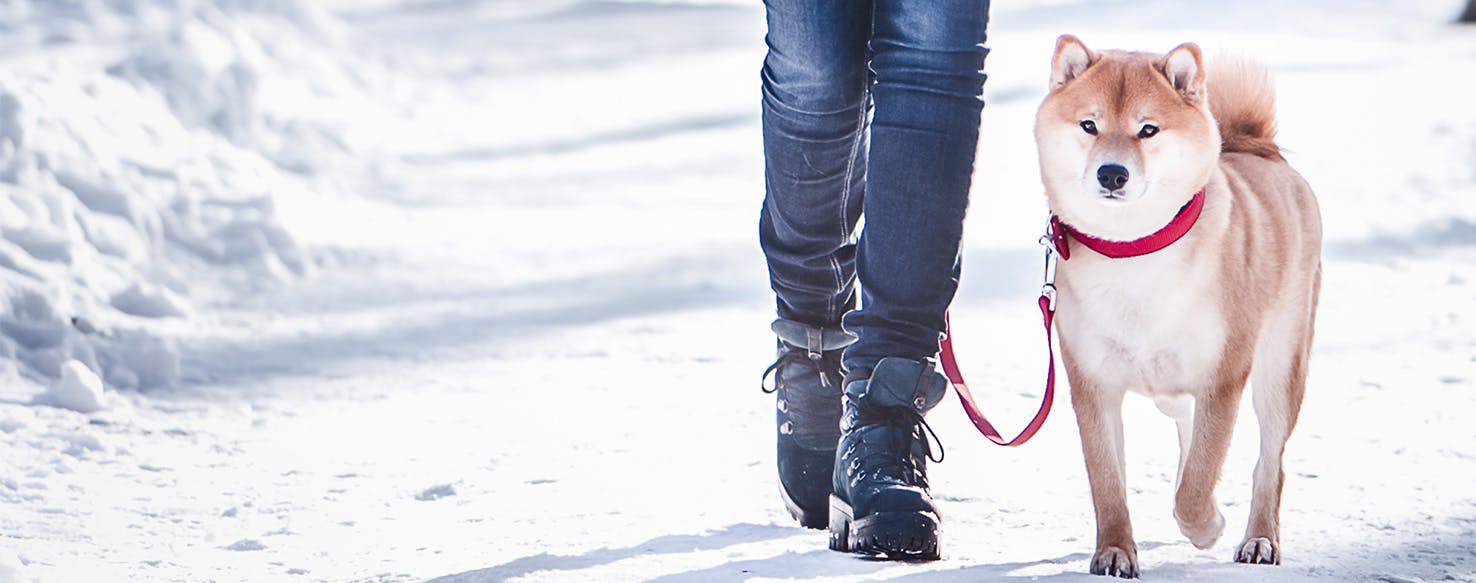- Home
- The Daily Wag!
- Senses
- Can Dogs Smell Fertility?

Dogs are basically superheroes - they have an incredible sense of hearing, can feel thunderstorms approaching, and have noses that can smell for miles. Dogs can sense when you're sad, when you're mad, and when you're just downright happy. Sometimes your pup may understand you better than your best friend. Your pup's unconditional love can go a long way with being in tune with how you are feeling.
Although man's best friend's senses are not unlimited, one may wonder whether dogs have the ability to smell fertility in humans. Read on to find out!
Veterinarians have come to a general consensus that dogs can sense at a subconscious level changes in human hormones. From living with humans for many thousands of years, dogs are highly sensitive to human behaviors and human hormones.
For instance, women who become pregnant have reported changes in their dogs' behavior (like becoming ultra-protective of their owner). Dogs can pick up on mood changes, body chemistry, and behavioral changes which may alert your pup that bigger change is happening. Dogs also have a great sense of smell, up to a million times better than that of humans!
When a dog senses changes in hormones, there are some signs you can read simply from your pup's behavior. For instance, a pooch might raise its nose and tilt its head if it's trying to concentrate on sounds and smells in the environment. If concentrating on a new scent, expect a stiff tail that is held high. When people are feeling scared, mad, or sad, our bodies may produce certain hormones, such as adrenaline. So it should come as no surprise that dogs can smell scents from these hormones and other body chemicals released as well.
Body Language
Signs that your dog can sense fertility include:
- Alert
- Head Tilting
- Sniffing
Other Signs
Other signs that your pooch can sense fertility are:
- Being Protective
- Following You Around
- Agitation
We are often embarrassed when our dogs start poking around in the private areas of our friends. Although we tend to feel uncomfortable, our dogs are just seeking information. For pups, smelling scents is much like their version of reading someone's profile page. This common sniffing is how dogs gather information from other dogs, and also humans.
There is a sweat gland called the "apocrine gland," and these scents help convey social information. In humans, these glands are found in our armpits and pubic regions. Most animals, including our beloved dogs, have apocrine sweat glands around their entire bodies. These scents can help attribute to the sex, age, and even mood of the individual. However, these scents can inform dogs about other sexual information too, such as where a female is in her menstrual cycle, if a female is pregnant, or if a woman has just given birth.
During pregnancy, women experience intense changes in hormones, such as estrogen and progesterone. Dogs, with their amazing noses, can pick up on these hormonal changes—even before a pregnancy test does.
Researchers have found that when a female ovulates, change in hormone levels can attract dogs. For instance, researchers realized dogs tended to sniff private areas more around ovulation. These researchers then trained some dogs to sniff out cows that had just ovulated - allowing farmers to successfully breed these cows during their short fertile period. So, feel free to add another super power to your dog's list.
Although sniffing is perfectly normal for dogs, you can train your dog to have some manners if the behavior is truly embarrassing. Start by having your dog "sit" and "stay" when you have guests over. If your dog wants to introduce themself, try having your guest let your pooch sniff their hand instead. This way, your pup can get a feel for who they are without invading their space.
If your pup still seems eager to "get to know" your friend, you can try putting your dog on a leash for introductions.
You can also create a "greeting area" for your dog by giving your pup a treat at the greeting area and having your pup sit. Dogs are most tempted to sniff a guest's private area when they first enter your home. You should keep your pup seated at the greeting area until you approach your pup with your guest. Ask your guest to approach the dog in the greeting area. When your guest finishes petting your dog, release your pup from the command. If your pup tries to sniff in private areas, have your pup sit again. When you tell your dog to go the greeting area, you disrupt the sniffing behavior.
Remember to reward your dog for good behavior. Creating boundaries is healthy for your pup and remaining their leader helps keep good behavior consistent.
Have questions or concerns about your pet?
Chat with a veterinary professional in the Wag! app 24/7.
Get Vet ChatWritten by Olivia Gerth
Veterinary reviewed by:
Published: 04/04/2018, edited: 04/06/2020
More articles by Olivia Gerth

